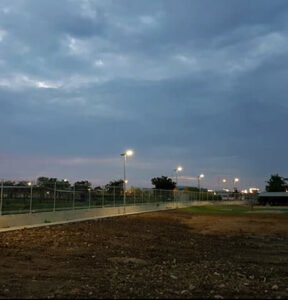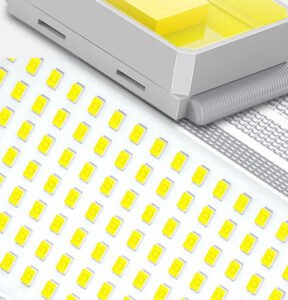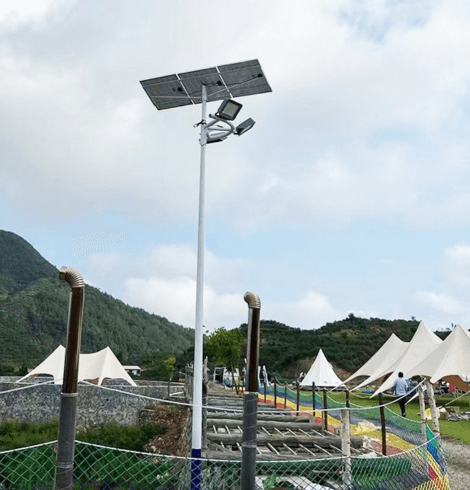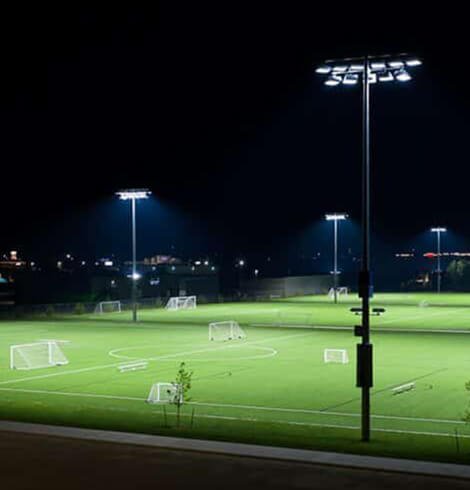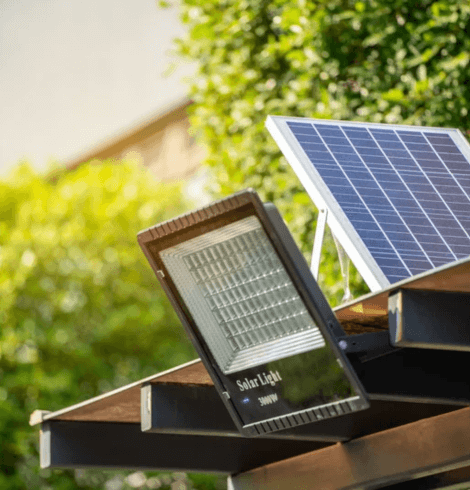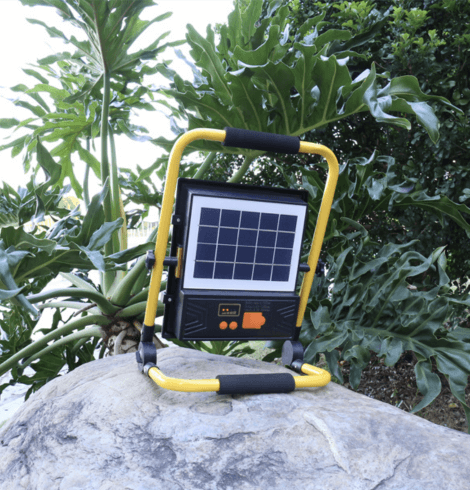Ever wondered how solar street lights work their magic each night without plugging into any power source? It’s pretty impressive to see these lights shining night after night with no external help.
All-in-one solar street lights pull this off using a mix of smart technology: solar panels, battery storage, LEDs, and sensors, all bundled together to harness sunlight by day and light up automatically at night.
In this guide, I’ll break down how these lights work, what makes them tick, and why they might be the perfect solution for outdoor lighting. Whether you’re curious about how they compare to split solar lights, the perks they bring, or the trends to watch, I’ve got you covered.
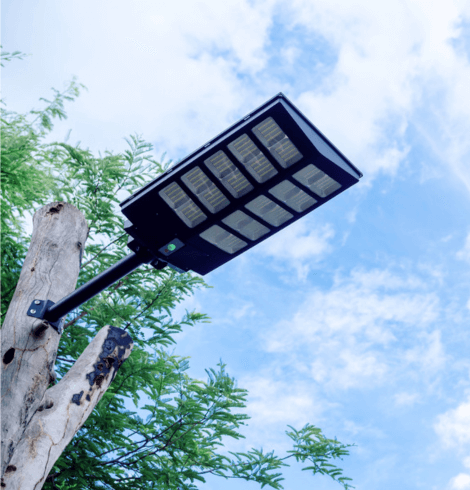
What Are the Key Components of All-in-One Solar Street Lights?
If we’re going to understand how these lights work, let’s first get familiar with the core components. Each part has a big job in keeping these lights powered up and shining bright—there’s really no wasted space.
The all-in-one solar street light has a solar panel, a battery, an LED light source, a charge controller, and smart features like motion and light sensors.
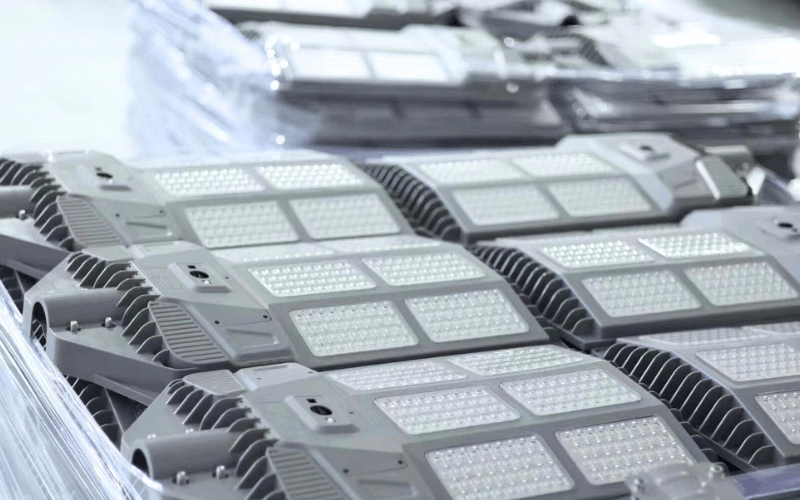
Solar Panel
The solar panel is what captures sunlight, turning it into electricity. This energy is stored in the battery so it’s ready to go at night. Some panels work better than others; high-quality ones can even capture enough sunlight on cloudy days. Now, that’s a relief if you live somewhere that’s not sunny 24/7!
Battery
The battery is like the heart of the system, holding all the energy collected during the day. Most are lithium-ion, which means they’re durable and can power the LED light all night long. The battery’s capacity and quality decide how long the light stays on after sunset.
LED Light Source
And speaking of LEDs, they’re amazing for their brightness and energy efficiency. They turn that stored energy into steady, clear illumination—so the light doesn’t just work, it shines.
Controller
Next up, we have the charge controller. It sounds technical, but really, it’s just there to keep the battery from overcharging. A little oversight goes a long way in making sure the battery lasts.
Smart Features
Finally, we have those handy smart features. The motion sensors make the light brighten up when movement’s detected, while light sensors control when to switch the LEDs on or off based on the surrounding light levels. Together, these components make all-in-one solar lights highly efficient and self-regulating.
How Do All-in-One Solar Street Lights Work?
So, let’s talk about how these lights actually get the job done. It’s a simple process but so cleverly designed that it works without us even needing to think about it.
During the day, these lights charge up automatically, then switch to lighting mode as soon as the sun goes down. It’s all thanks to the sensors and power management that run on autopilot.

Capture and Converting Sunlight
Throughout the day, the solar panel captures sunlight, converting it into electrical energy stored in the battery. The charge controller keeps this process smooth, making sure the battery doesn’t get overloaded—which is pretty smart. This way, the battery stays healthy and ready for the long run.
Store Energy and Power Light
As soon as dusk hits, the light sensor detects the change and flicks on the LED. The battery powers the light all night, with no manual adjustments needed.
Smart Functions
The smart functionalities keep it efficient, too. When the motion sensor detects someone or something moving nearby, it brightens the light to full capacity for better visibility. If there’s no activity, it dims, saving power and extending battery life. This seamless charging, auto-activation, and brightness adjustment make all-in-one solar lights a great solution for dependable outdoor lighting.
How Does an All-in-One Solar Light Compare to a Split Solar Street Light?
When it comes to solar lighting, you might be asking: should I go with all-in-one or split solar lights? Good question! Let’s dig into the differences so you can make the best choice for your space.
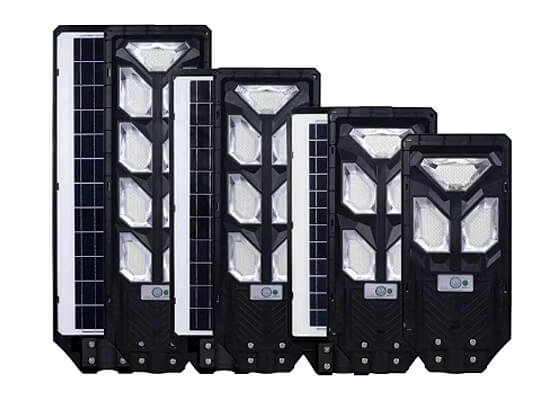
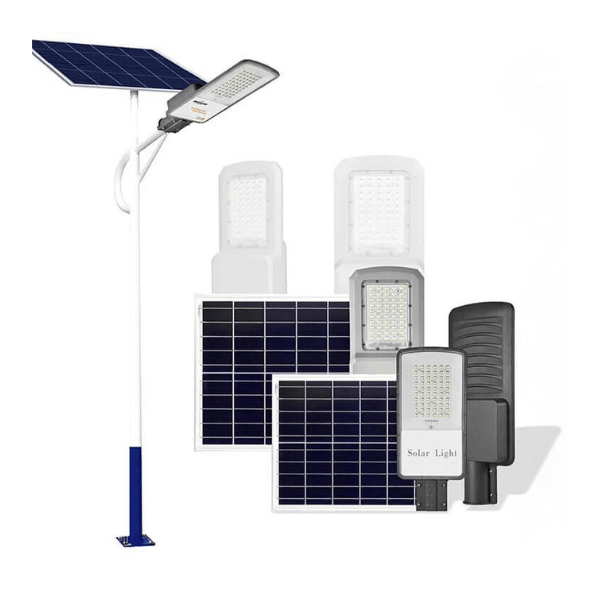
Design and Structure
All-in-one lights have everything packed into one single unit, making installation a breeze. There’s no extra wiring involved, which means you can set these up quickly. Ideal if you’re in a hurry or prefer a streamlined look.
On the other hand, split solar street lights separate the solar panel from the battery and LED. This lets you place the panel in a sunnier spot, even if the light itself needs to be shaded. For areas where sunlight isn’t consistent, this flexibility can make a real difference.
Maintenance and Accessibility
Maintenance is another thing to consider. With all-in-one lights, their compact design can make it a bit trickier to repair individual components, but they’re generally low-maintenance anyway. Split lights, meanwhile, make it easy to access and replace parts individually if needed.
Cost Consideration
There’s also the cost factor. All-in-one lights often have a higher upfront price because of the integrated design, but they save on installation and ongoing maintenance, so they can pay off in the long run. So, if you value easy setup and a tidy look, all-in-one might be your winner. But if you’re after flexibility and component access, split lights might suit you better.
Why Choose All-in-One Solar Street Lights?
So, why should you go for all-in-one solar street lights? There are plenty of reasons, especially if you’re looking to save on energy costs, reduce maintenance, and make a greener choice.

Energy Efficiency and Cost Savings
First off, these lights are super energy-efficient. They run entirely on solar power, which means you save on electricity bills. For anyone managing multiple installations—think towns, campuses, or even large parks—the savings can add up fast.
Eco-Friendly and Sustainable
They’re also eco-friendly. By relying on solar energy, these lights produce zero emissions, making them perfect for reducing your carbon footprint. If going green is important to you, these lights are a natural fit.
Low Maintenance and Durability
And they’re tough! Built to withstand all kinds of weather, they’re low-maintenance and can last for years. Most models are designed to keep out water and dust, so they stay protected and reliable, rain or shine.
Independence from Power Grid
Security is another big plus. The motion sensors brighten the light when they detect movement, making spaces safer for both people and vehicles. Plus, since they’re independent of the power grid, you can place them almost anywhere—remote trails, off-grid properties, you name it.
What Are the Limitations of All-in-One Solar Street Lights?
Like anything, these lights aren’t without a few limitations. Knowing what to expect can help you plan for any maintenance needs down the line.
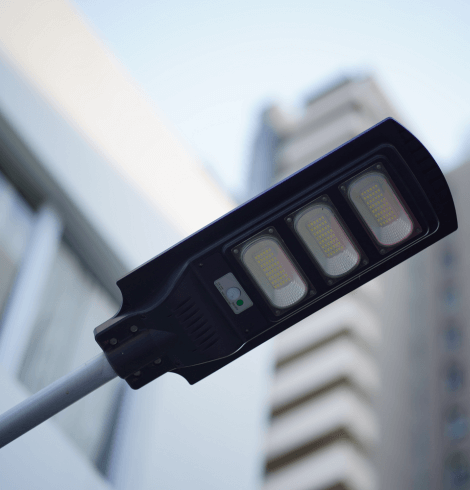
Weather Dependence
One thing to keep in mind is their reliance on sunlight. Most panels are super-efficient, but if you live in a place with lots of overcast days, you might see a slight dip in brightness at night. Luckily, high-quality models are designed to make the most of limited sunlight, so this usually isn’t a dealbreaker.
Initial Cost
Another consideration is the initial cost. Yes, all-in-one solar lights cost more upfront than standard lights. But here’s the thing: over time, you’re saving on energy and maintenance costs, so many users find it’s worth the investment.
Battery Replacement Cycle
Then, there’s battery replacement. Generally, you can expect to replace the battery every three to five years, depending on use and maintenance. Keeping the solar panel clean and choosing a high-quality model can extend battery life, so a little care goes a long way.
What Are Practical Considerations for Installation?
When it’s time to install your all-in-one solar street lights, a few practical steps can make all the difference in performance. Proper placement, choosing the right model, and routine maintenance help ensure you get the best out of your investment.
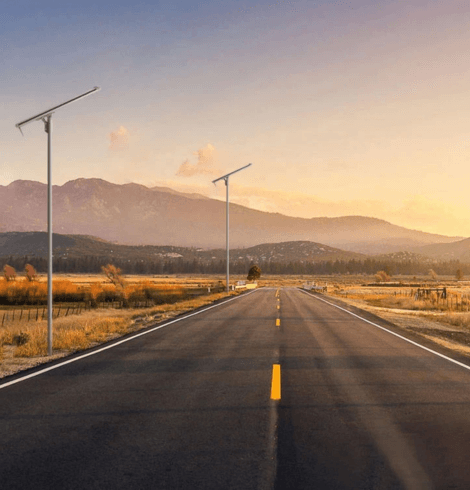
Positioning Site
First, look for an installation spot with maximum sun exposure. Sunlight is everything when it comes to efficiency, so positioning your lights well is key.
Choose a Right Model
Next, pick a model that suits your needs. If you’re lighting up a high-traffic area, you might need a bigger battery and brighter output. For quieter spots, a smaller, more efficient model could be just right.
Maintenance Tips
Maintenance is light but essential. Giving the panel an occasional wipe-down can prevent dust from blocking sunlight, ensuring it keeps gathering as much energy as possible.
Weather Resistance
Also, consider weather durability. Look for models with high IP ratings, like IP65 or above, to make sure they withstand rain, dust, and other elements. This durability ensures your lights will keep shining, whatever the weather.
What Are the Future Trends in Solar Street Lighting?
As technology keeps advancing, solar street lights are only going to get smarter and more efficient. So, what’s on the horizon for these lights?

One big trend is integration with the Internet of Things (IoT). Soon, solar lights could be connected to smart city networks, allowing for remote monitoring, data collection, and even adaptive brightness. Imagine being able to control light usage from a central system—it’s coming!
Battery technology is also evolving. Newer batteries promise faster charging times and longer lifespans, which could make solar lights even more sustainable.
Then there’s adaptive lighting. This feature would allow lights to adjust brightness based on activity levels, weather conditions, or the time of day, which would be a game-changer for energy savings and efficiency.
Conclusion
All-in-one solar street lights are a smart, eco-friendly solution for sustainable outdoor lighting. They’re easy to install, need little maintenance, and run completely independently of the power grid.
If you’re considering a reliable, green option for lighting up outdoor spaces, all-in-one solar street lights could be just what you need.



